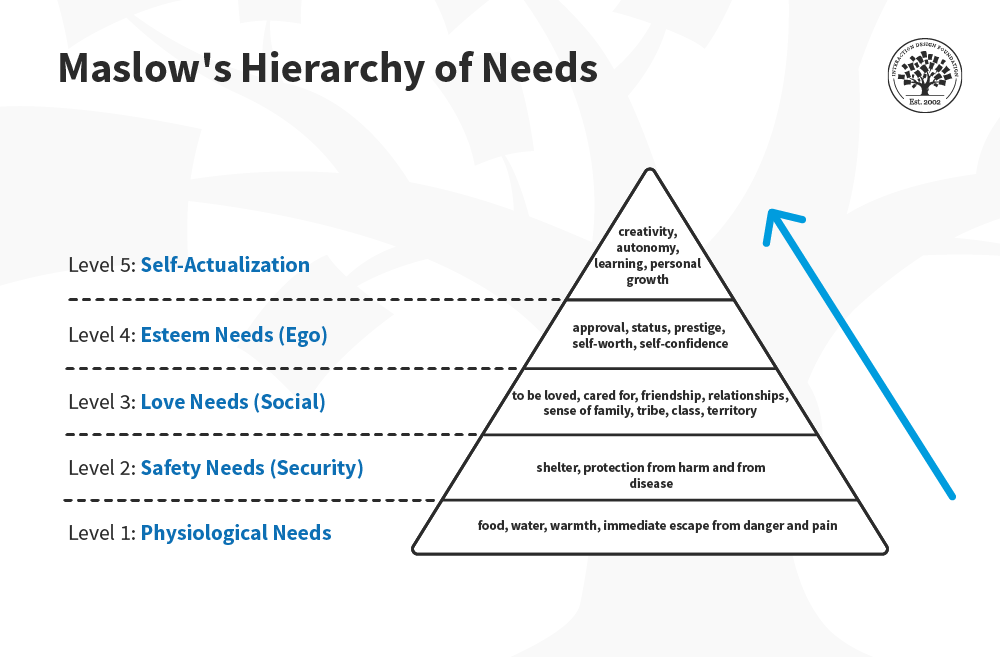Abraham Maslow's hierarchy of needs asserts that when we fulfill unconscious goals such as food, shelter and approval, we improve our quality of life. The improvement of technology has also been driven by the fulfillment of human needs; that’s why the shift to service orientation in the digital world has meant that user experience (UX) has become increasingly important in the field of HCI.

Maslow’s hierarchy of needs. Note that some authors call level 1 “physical needs”.
In Abraham Maslow’s 1943 paper, he described the nature of the hierarchy as follows:
"Human needs arrange themselves in hierarchies of pre-potency. That is to say, the appearance of one need usually rests on the prior satisfaction of another, more pre-potent need. Man is a perpetually wanting animal. Also no need or drive can be treated as if it were isolated or discrete; every drive is related to the state of satisfaction or dissatisfaction of other drives."
— Abraham Maslow, "A Theory of Human Motivation"
Various authors in Human-Computer Interaction and User Experience have taken a similar view of the human relationship with technology, as HCI Professor Alan Dix explains.
Show
Hide
video transcript
- Transcript loading…
The Takeaway
Maslow's hierarchy informs our understanding of how humans prioritize their needs, and we apply this framework in the field of HCI and UX. As people have more choices and are more likely to switch services if their needs are not being met, the criticality of user experience has increased with the shift toward service orientation. Similar to Maslow's hierarchy of needs, a product or service's functionality takes precedence over usability, followed by user experience. To deliver effective and satisfying user experiences, we must continue to understand and assess these priorities as technology evolves.
Download this useful template of Maslow's hierarchy as well as a UX needs hierarchy from UX Consultant Jon Duhig.













